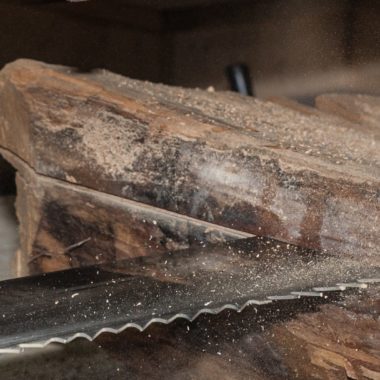
Sawmill from Anspach
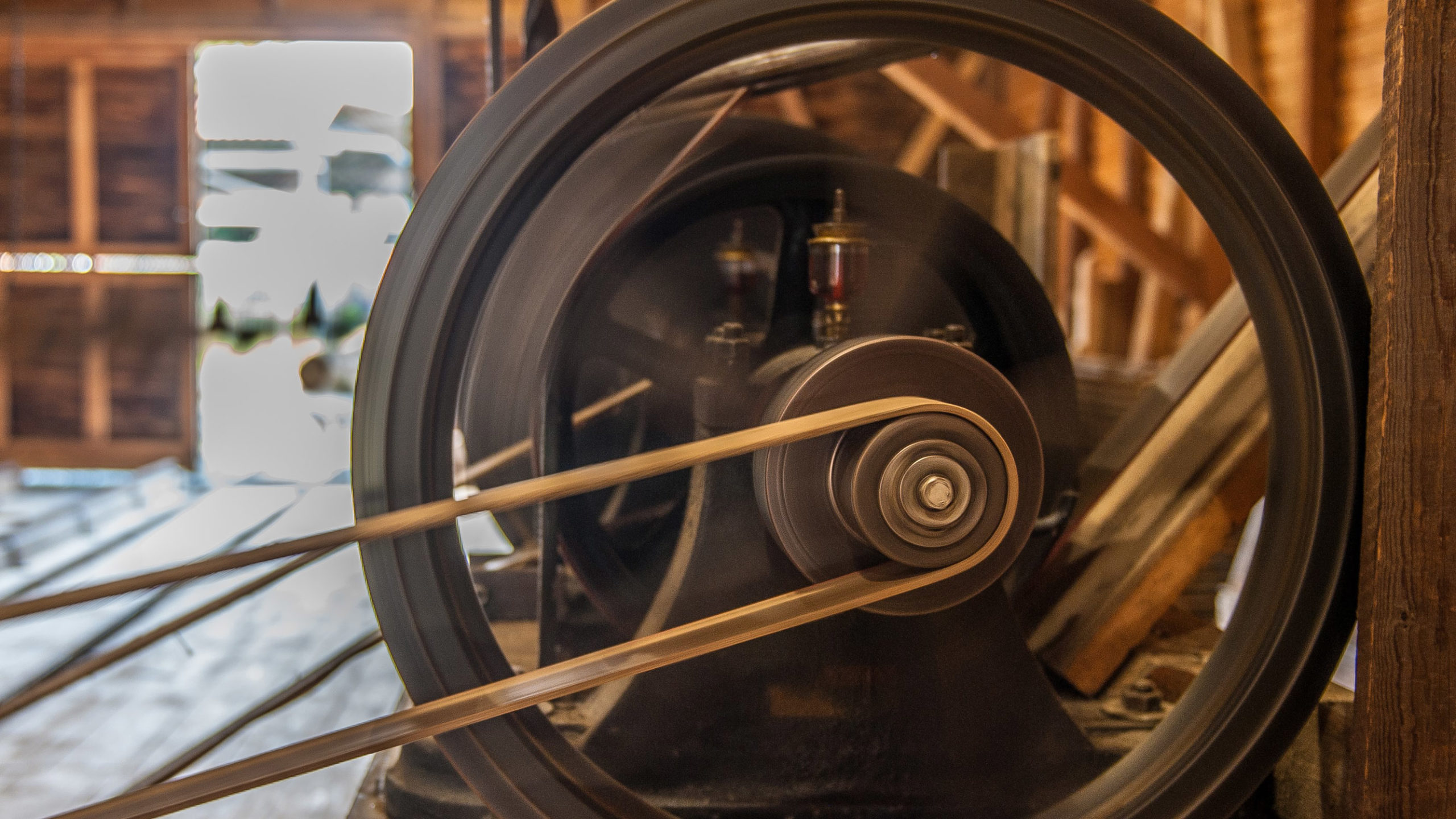
Built: circa 1900
Dissassembled: 1983
Reassembled: 1992, 2012 to 2013
Otto Jung founded his business in 1916 but soon sold it on to the Gebrüder Störkel (Störkel Bros.) in 1919. Logs were cut into lumber and traded on the original site. The company was very successful. Lumber was sold into the Frankfurt region. Due to the destruction left in the wake of the Second World War, the company flourished after 1945. More and more craftsmanship services, such as carpentry, joinery, and staircase construction, were offered. Transporting the tree trunks felled in the Taunus mountains was hard work. Farmers and other owners of draught animals, such as horses and oxen, were often called on to help the Störkels’ team of horses. With the acquisition of a Hanomag tractor with a winch and a truck in around 1948, transport became much easier.
In 1977, the business was sold. The sawmill buildings finally had to be taken down at their original location as part of a new road planning scheme in 1982. The Störkel family is still active in the business of joinery and carpentry. A modern timber construction company, headquartered in the neighbouring village of Wehrheim, was built already in 1977. Störkel Holz- und Bedachungsunternehmen GmbH & Co KG continues to offer carpentry and roofing work.
The machinery in the Gebrüder Störkel works in Anspach ran on steam engines. In the Open Air Museum, the saw is powered by an electric engine housed in an annex. The saw is set into motion through flat belts.
The original vertical saw was replaced with a horizontal saw during the buildings reassembly. This saw comes from a sawmill-cum-carpenter’s from Hünfelden-Heringen and was built by the Wehrhahn company in Delmenhorst, Northern Germany, in the 1920s. There are some advantages to a horizontal saw: the saw runs more evenly, which makes for a cleaner cut, and allows trunks with a large diameter (up to a metre in thickness) to be sawn. The disadvantage is that it is a single-blade apparatus. In a vertically operated saw, as the one that can be seen in the sawmill’s annex, several blades were installed into the frame, so that several boards could be cut from a log in a single operation. The frame in the annex is the original frame from the Anspach sawmill.
The sawmill also features a wood wool machine from the August Löw company from Riedelbach. The company produced bonded wood wool boards. This natural insulation material was patented in Austria in 1908, and manufactured industrially in Germany after 1927. The boards are an early insulation material from renewable raw materials. The dry wood is shredded to finest shavings, mineralized with magnesite and bonded with cement. Then the mixture is pressed. The resulting panels are non-flammable and pest resistant.
All the machines in the workshop are fully functioning and are operated on several days every year for demonstration purposes.
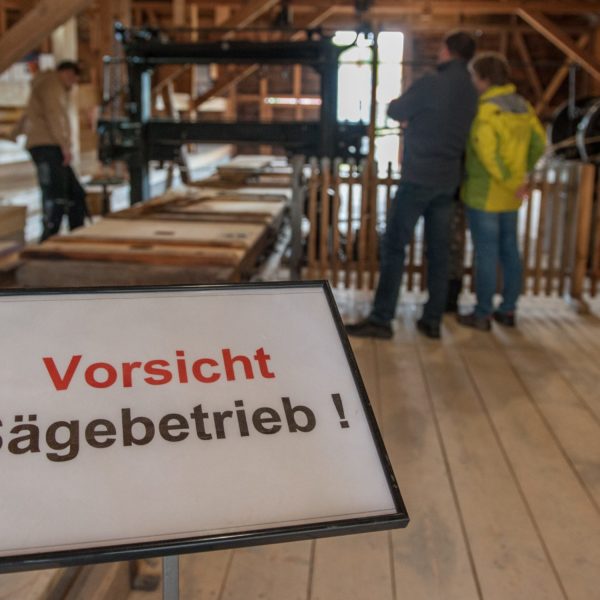
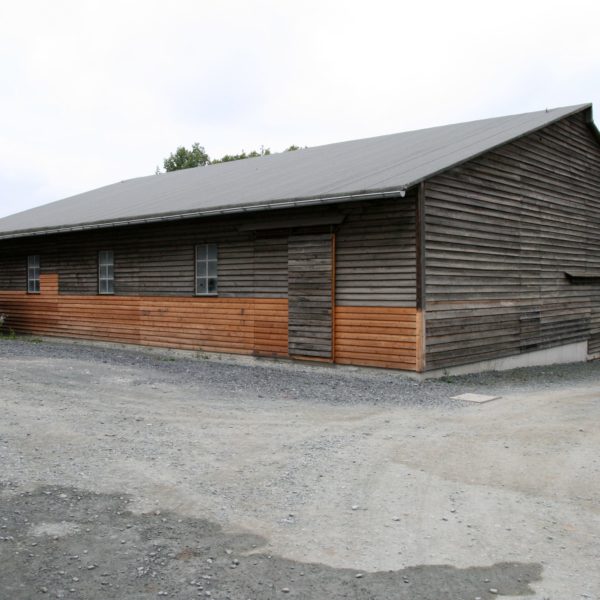
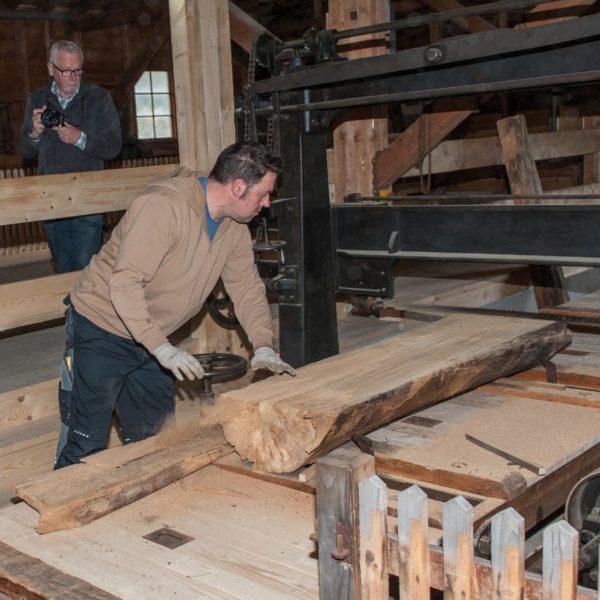

Mit dem Laden der Karte akzeptieren Sie die Datenschutzerklärung von Google.
Mehr erfahren
More links





